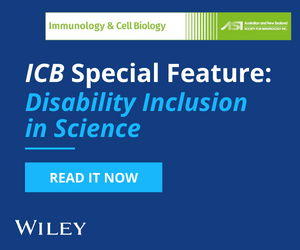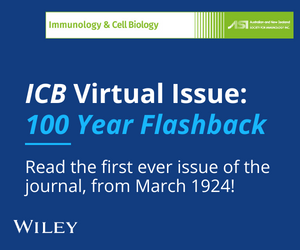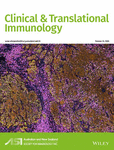Journal list menu
Export Citations
Download PDFs
Issue Information
NEWS AND COMMENTARIES
Bridging the gap – a new role for STAT3 in TLR4-mediated metabolic reprogramming
- Pages: 122-125
- First Published: 11 November 2020
Epitope masking may limit antibody boosting to malaria vaccines
- Pages: 126-129
- First Published: 05 November 2020
Plasma cells don't last forever
The rise and fall of bone marrow plasma cells after influenza vaccination
- Pages: 130-132
- First Published: 09 November 2020

A recent report by Davis et al. shows that following vaccination, B-cell activation results in the emergence of a population of antibody-secreting cells (plasmablasts – PBs) in blood and a population of plasma cells (PCs) in the bone marrow, which likely originate from the day 7 PBs. However, these newly arrived PCs do not become long-lived and their abundance decreases by 1 year post-vaccination.
SPECIAL FEATURE: Omics in Immunology
EDITORIAL
REVIEWS
The human T-cell receptor repertoire in health and disease and potential for omics integration
- Pages: 135-145
- First Published: 16 July 2020
Detecting pathogenic variants in autoimmune diseases using high-throughput sequencing
- Pages: 146-156
- First Published: 05 July 2020

Although sequence data generation has become routine and affordable, significant challenges remain with no gold-standard methodology to identify pathogenic variants currently available. This review examines the latest methodologies used to identify pathogenic variants in autoimmune disease and considers available sequencing options and subsequent bioinformatic methodologies and strategies. The development of reliable and robust sequencing and analytic workflows to detect pathogenic variants is critical to realize the potential of precision medicine programs where patient variant information is used to inform clinical practice.
Recent advances in single-cell multimodal analysis to study immune cells
- Pages: 157-167
- First Published: 14 December 2020
The future is now? Clinical and translational aspects of “Omics” technologies
- Pages: 168-176
- First Published: 13 September 2020
REVIEWS
COVID-19, varying genetic resistance to viral disease and immune tolerance checkpoints
- Pages: 177-191
- First Published: 28 October 2020

Coronavirus disease 2019 (COVID-19) results from a virus making an interspecies leap that tests genetic resistance to viral disease, like most of the great plagues sculpting human history. Here I set out known unknowns for tackling COVID-19, taking advantage of progress understanding how viral disease is countered by fundamentally different genetic mechanisms for resistance: resistance to virus transmission primarily by activation of immune responses; and resistance to pathology primarily by tolerance checkpoints to limit immune responses.
Angiotensin-converting enzyme as a new immunologic target for the new SARS-CoV-2
- Pages: 192-205
- First Published: 30 August 2020
ORIGINAL ARTICLES
Vagal-α7nAChR signaling attenuates allergic asthma responses and facilitates asthma tolerance by regulating inflammatory group 2 innate lymphoid cells
- Pages: 206-222
- First Published: 06 September 2020

In this study, we found that neuropeptides released from pulmonary C-fiber endings could enhance airway hypersensitivity in asthma by increasing the number of ILC2s and iILC2s and type 2 cytokines [interleukin (IL)-4, IL-5 and IL-13] production. However, α7 nicotinic acetylcholine receptor signaling activated by acetylcholine could suppress allergic inflammation or facilitate oral ovalbumin feeding-induced asthmatic tolerance by reducing ILC2 or iILC2 responses and sphingosine-1-phosphate-dependent iILC2 recruitment into the lung.
TANK-binding kinase 1 mediates osteoclast differentiation by regulating NF-κB, MAPK and Akt signaling pathways
- Pages: 223-233
- First Published: 08 September 2020

TANK-binding kinase 1 (TBK1) knockdown inhibits the receptor activator of nuclear factor-κB (NF-κB) ligand (RANKL)-induced osteoclast (OC) differentiation and function. Downregulation of TBK1 greatly suppresses RANKL-induced gene expressions correlated with OC differentiation. TBK1 mediates the OC differentiation and function by regulating NF-κB, mitogen-activated protein kinases and protein kinase B signals.
SHORT COMMUNICATION
GPR43 regulates marginal zone B-cell responses to foreign and endogenous antigens
- Pages: 234-243
- First Published: 04 September 2020

Marginal zone B cells express the short-chain fatty acid receptor GPR43. Mice lacking GPR43 have heightened responses to T-cell-independent antigens and have elevated levels of immunoglobulin M specific for double-stranded DNA and phosphatidylcholine. Thus, short-chain fatty acids may regulate marginal zone B-cell responses to several antigens.














